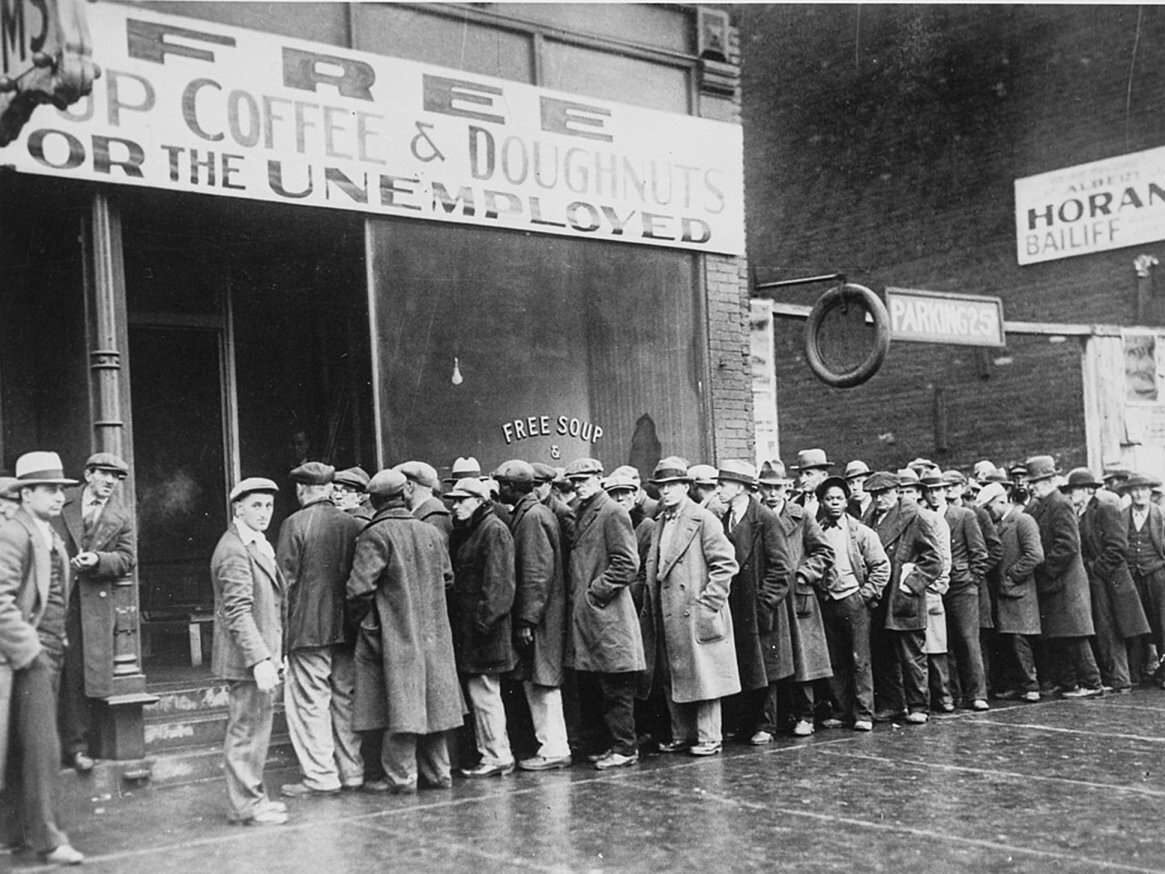It was the best of times, it was the worst of times, it was the age of wisdom, it was the age of foolishness, it was the epoch of belief, it was the epoch of incredulity, it was the season of light, it was the season of darkness, it was the spring of hope, it was the winter of despair…
It was the ‘30s when the greatest economic event of the 20th century came in effect. The general mood of the world was that of shock as if it was all ending. The roaring ‘20s were a turning point where the world grew and grew and it looked as if the sky’s the limit.
He was a man of vision, he came in midst of that chaos to offer a way out, he had his supporters and he had his haters, and many would dispute his legacy.
While it wasn’t perfect like every other theory since the world is a complex place and no one theory can explain everything, yet many governments and many leaders took and should take into consideration his work that could offer a way out specially during the tough times.
We’re talking about John Maynard Keynes. Let’s know more about the theory he gave that changed the world.
What is Keynesian Theory?
Keynesian Economics is an economic theory that covers total spending in the economy and how it affects inflation and output.
John Maynard Keynes, a renowned British economist, gave the theory in the 1930s to understand the changing economy due to the Great Depression.
He pushed to lower taxes and increase government expenditures to get out of the situation by stimulating demand. He was of the idea that hiring unemployed individuals can help bring the world economy out of the depression.
He said that governments should spend on social services and infrastructure. According to him, hiring unemployed individuals means they would have a source of income to help them pay bills. He highlighted how hiring one individual can lead to more individuals being hired.
The Great Depression hit the world in 1933 and ended in 1939. Many credit the British economist for bringing the economy out of the depression.
Understanding Keynesian Economics
Keynesian economics gave people the option to look at inflation, spending, and output in a new light. Earlier on, classical economic theories were believed to be true. They held that cyclical swings in economic output and employment would be self-adjusting and modest.
According to classical theories, if aggregate demand fell, the resulting weakness in jobs and production would result in a decline in wages and prices. Lower wages and inflation and would induce employers to take steps to hire more people and increase capital investments, restoring growth and stimulating employment.
This hypothesis, however, was severely tested during the Great Depression.
Keynes talked about this in several of his books including The General Theory of Employment, Interest, and Money. He said that structural rigidities would exacerbate economic fragility and result in aggregate demand to dip further during periods of recession.
His theory disputes the belief that lower wages have the ability to restore employment. He argues that businesses will not opt to add employees if there is no higher demand for the products that they sell. There’s no point in hiring more employees to produce more of something that has no buyers.
Similarly, weak markets may push companies to reduce investment, rather than counting on the opportunity to increase the size of the business by investing in new equipment and plants.
Keynesian Multiplier
Keynes introduced the Keynesian multiplier that represents the impact of each dollar spending on demand.
For example, if the multiplier is two then it will create $2 of GDP for every $1 of spending. According to most experts, the Keynesian multiplier is one. This means every $1 of government spending will add only $1 to the economy.
The Great Depression and Keynesian Economics
Keynesian economics is also known as “depression economics,” since it was published during the phase when the world was in depression.
The 1936 book received acclaim for explaining economic phenomena during the Great Depression, which previous theories failed to explain. The Great Depression countered older theories as unemployment remained high despite low prices.
This situation inspired Keynes to look at the scenario from a different perspective. He used previous theories to establish real-world applications with implications in the economic crisis.
He rejected the possibility of the economy returning to a natural equilibrium. He presented the idea that once an economy begins to fall down, the gloom and fear that it instills among investors and businesses will eventually become self-fulfilling and can lead to higher unemployment and a longer period of poor economic activity.
He tried to counter the situation by advocating a fiscal policy in which the authorities should take steps to boost consumer spending and investment by undertaking deficit spending.
This was the time when Keynes was vocal against the British government and its policies because the government had taken some bold steps such as cutting welfare spending and raising taxes in order to balance the books.
Keynes argued that such a move will have a negative impact on people. He believed that it will further destabilize the economy by discouraging people to spending their money.
He was against excessive savings during this time, unless it had a specific purpose such as education or retirement. He believed that saving can harm the economy, especially when it’s already performing poorly.
He asked the governments to spend more and push consumer demand to motivate consumers to spend more and save less.
Keynes’ approach wasn’t appreciated right away. In fact, both free-market advocates and classical economists criticized it. They argued that the market has the ability to regulate itself and retain equilibrium.
Keynes did not accept this approach, especially because he could see the market struggling during this time. He said that the government can control the market instead of waiting for the market to control itself.
Classical Economic Theories Versus Keynesian
As mentioned earlier, classical economic theory sides with laissez-faire policy. According to it, the free market allows demand and supply to self-regulate the business cycle.
It plants the idea that unfettered capitalism can create a thriving market on its own. It will allow private entities to own the four factors of production: labor, natural resources, entrepreneurship, and capital goods.
Classical economic theory was believed until the Great Depression hit the world. The truth is that it advocates for a limited government with a balanced budget and little debt.
It’s important to control government spending because it crowds out private investment. However, this one only happens when there’s no recession. As a result, government borrowing begins to compete with corporate bonds. This results in more expensive borrowing due to higher interest rates.
On the other hand, deficit spending doesn’t raise interest rates during a recession.
Criticism of Keynesian Economics
As mentioned earlier, not everyone agreed with the Keynesian theory. Supply-sideeconomists argue that consumer demand does not help the economy; increasing business growth does.
While they agree that government agencies are important, they maintain that fiscal policy should target businesses. They count on deregulation and tax cuts.
Advocates of trickle-down economics argue that fiscal policy needs to benefit the rich. Since businesses are owned by the wealthy, the benefits they derive will eventually trickle down to one and all.
Monetarists believe that the true driver of the business cycle is monetary policy. Experts like Milton Friedman hold high-interest rates responsible for depression. They believe that expanding the supply of money will boost growth and end recessions.
Socialists are not in favor of Keynesianism. They criticize it because they think it does not go very far. They believe that the government has an important role to play. It should play an active role and take steps to protect the welfare of the common man. They refer to the ownership of factors of production such as the nation’s energy, education services, and health care.
Communists seem to be even more critical of the theory. They push the government to own everything. The theory was heavily criticized in the ‘70s when theorists argued that people would be able to foresee the debt due to deficit spending.
This will force them to save more today to get rid of the future debt they may incur. Deficit spending would result in more savings, not economic growth or demand.
Keynesian Economy in the Current World
Keynesian economists rely on lowering interest rates to solve economic woes while trying to avoid the infamous zero-bound problem. The concept is simple. As interest rates continue to fall, it gets harder and harder to stimulate the economy by using this trick. This is because lower interest rates motivate people to save instead of investing.
This is why manipulating interest rates may not be the best option to improve the economy. This situation is known as a liquidity trap. One of the best examples of such a scenario was Japan’s Lost Decade at the beginning of the ‘90s.
During this time, the country’s interest rates reached very low to a point that they stopped having the desired impact on the economy.
Keynesian economists suggest turning to other strategies when lowering interest rates does not deliver. Some of the other suggestions include changing the fiscal policy, tax rates, money supply, etc.
The New Keynesians theory was inspired by the rational expectations theory. They believe that fiscal policy is not as potent as monetary policy. According to them, the right monetary policy can remove the need for deficit spending.
Banks can run without asking politicians for help. They only need to adjust the supply of supply.
Examples of the Keynesian Theory in the Real World
Even though US and many other developed economies seems to have an undivided commitment to the ne0liberal economic theory and free market in general they have time and again have utilized the Keynesian model in one way of another since the theory inception.
President Roosevelt followed the Keynesian theory and increases spending which helped end the Great Depression by spending. He took some major steps including the creation of Social Security, changes in child labor and minimum wage laws.
President Ronald Reagan announced the decision to reduce taxes and government spending. He named these traditional Republican policies, Reaganomics. However, he chose to increase the budget by 2.5% each year.
By the end of his first run, he pushed defense spending from 444 billion USD to 580 billion USD. He also made some changes to the corporate tax rate and income tax. As a result, debt nearly doubled during his run but it did help get over the 1981 recession.
Another president who deserves to be on this list is Bill Clinton. His expansionary policies resulted in great success. He’s credited for creating more jobs than any other president in the country. Home ownership was also very high during his run – 67.7 percent. Moreover, the poverty rate also fell to 11.8 percent.
Barack Obama also played an important role in putting an end to the Great Recession by introducing the Economic Stimulus Act. The purpose of this act was to improve the economy. It spent 224 billion USD in unemployment benefits, health care, and education. It allocated 275 billion USD in loans, federal contracts, and grants to create jobs. Plus, the controversial decision to introduce Obamacare reduced health care costs.
While no one theory can offer a way out and can explain the world a combination and blended approach can create an effective antipode for a sick or a recovering economy.



